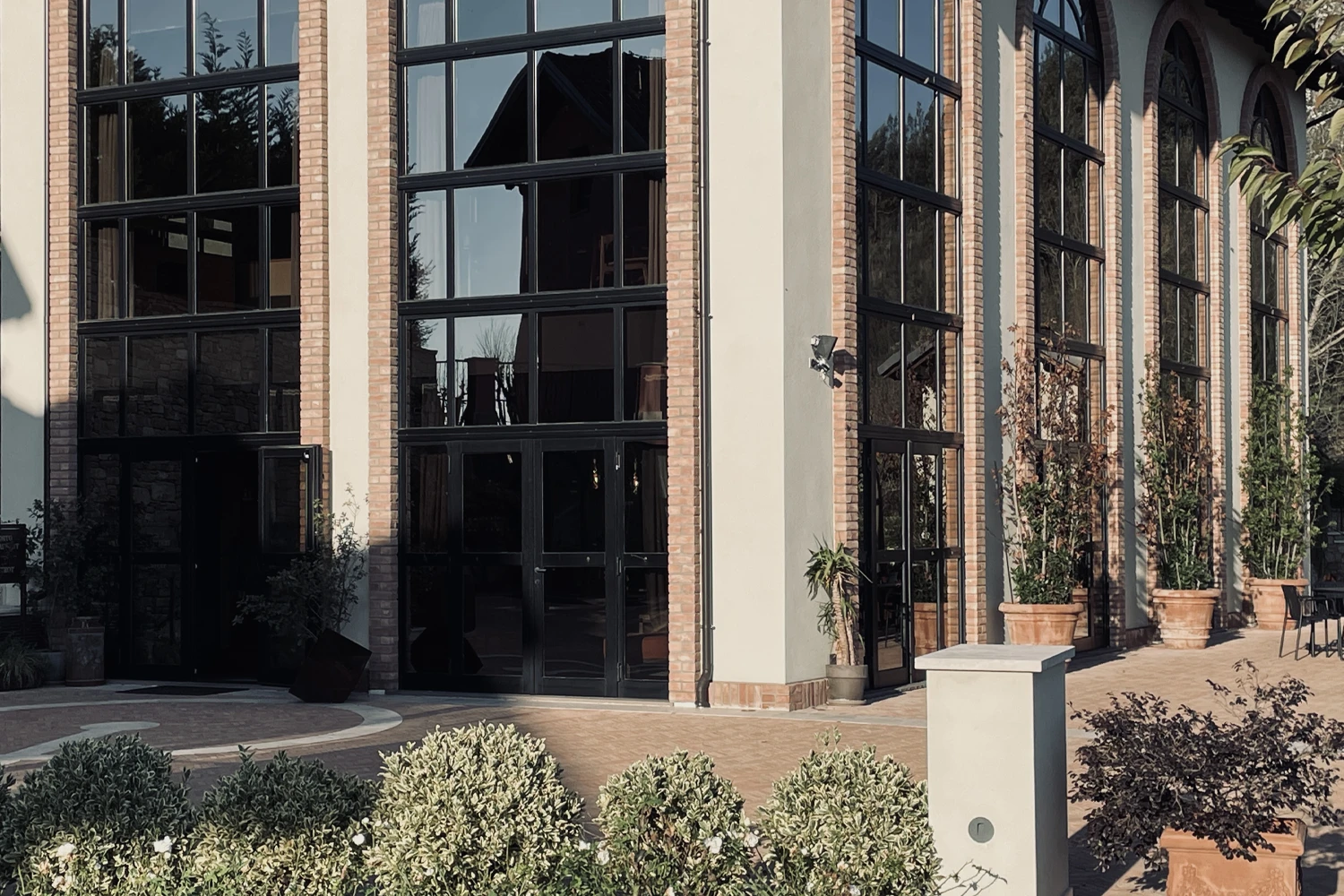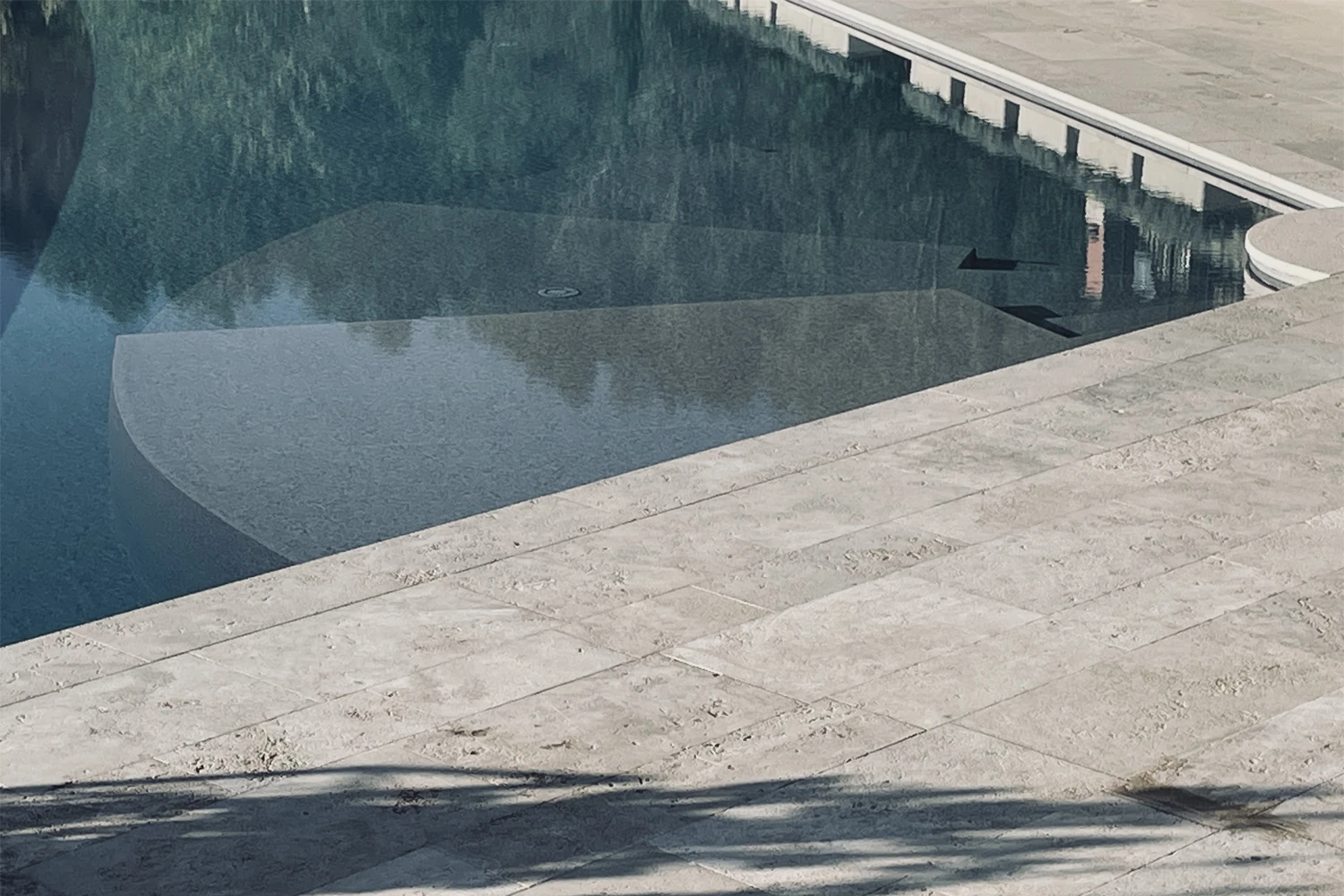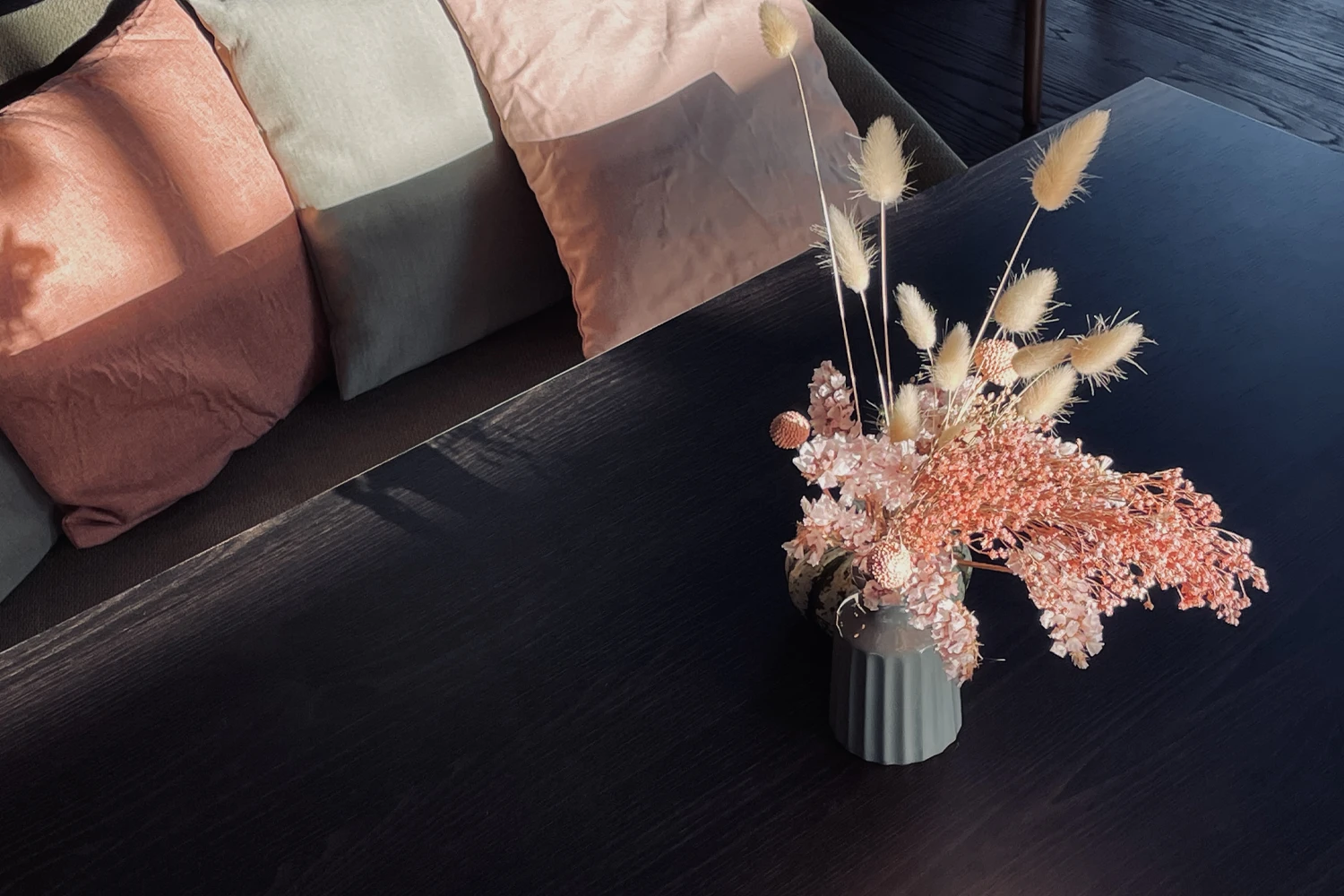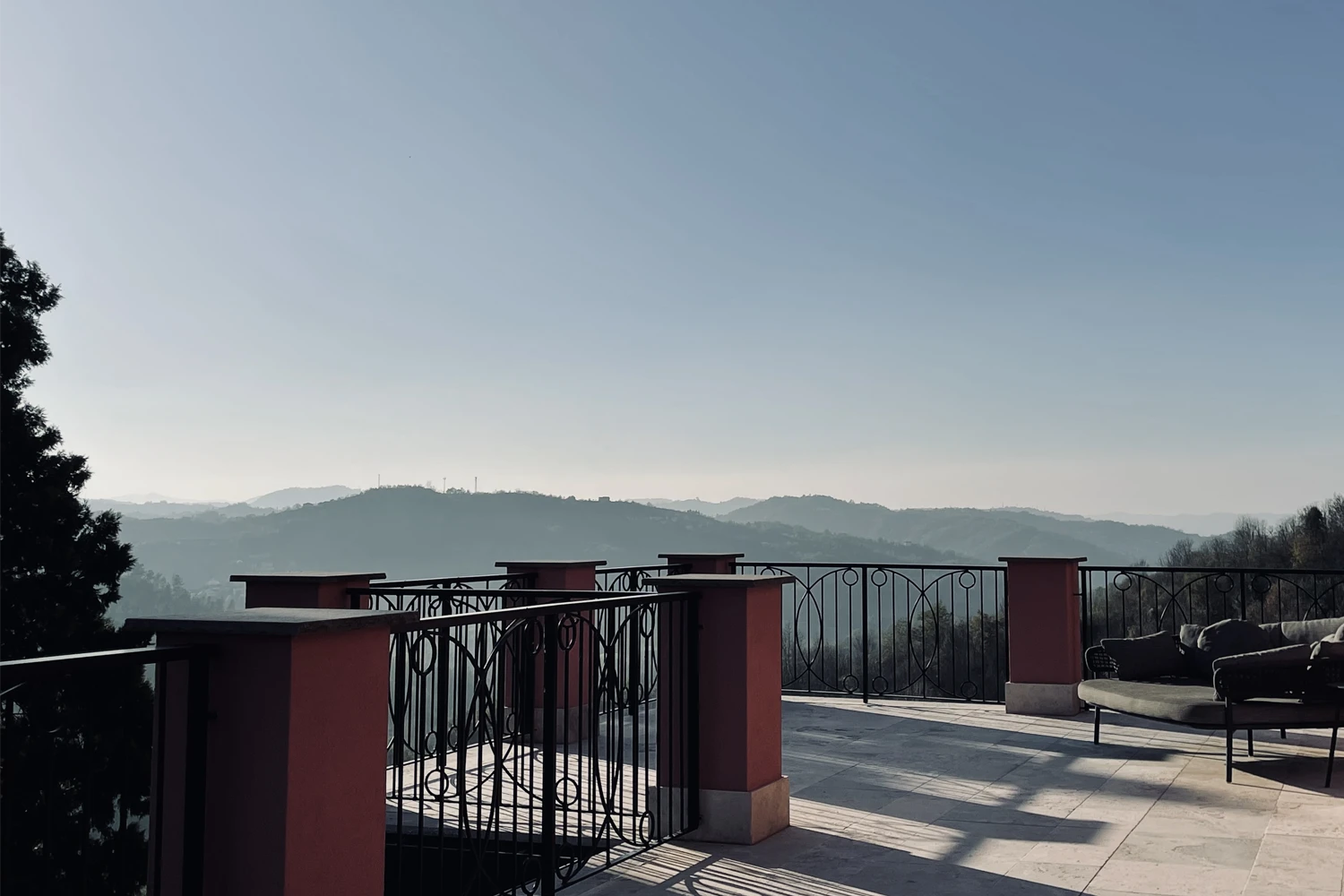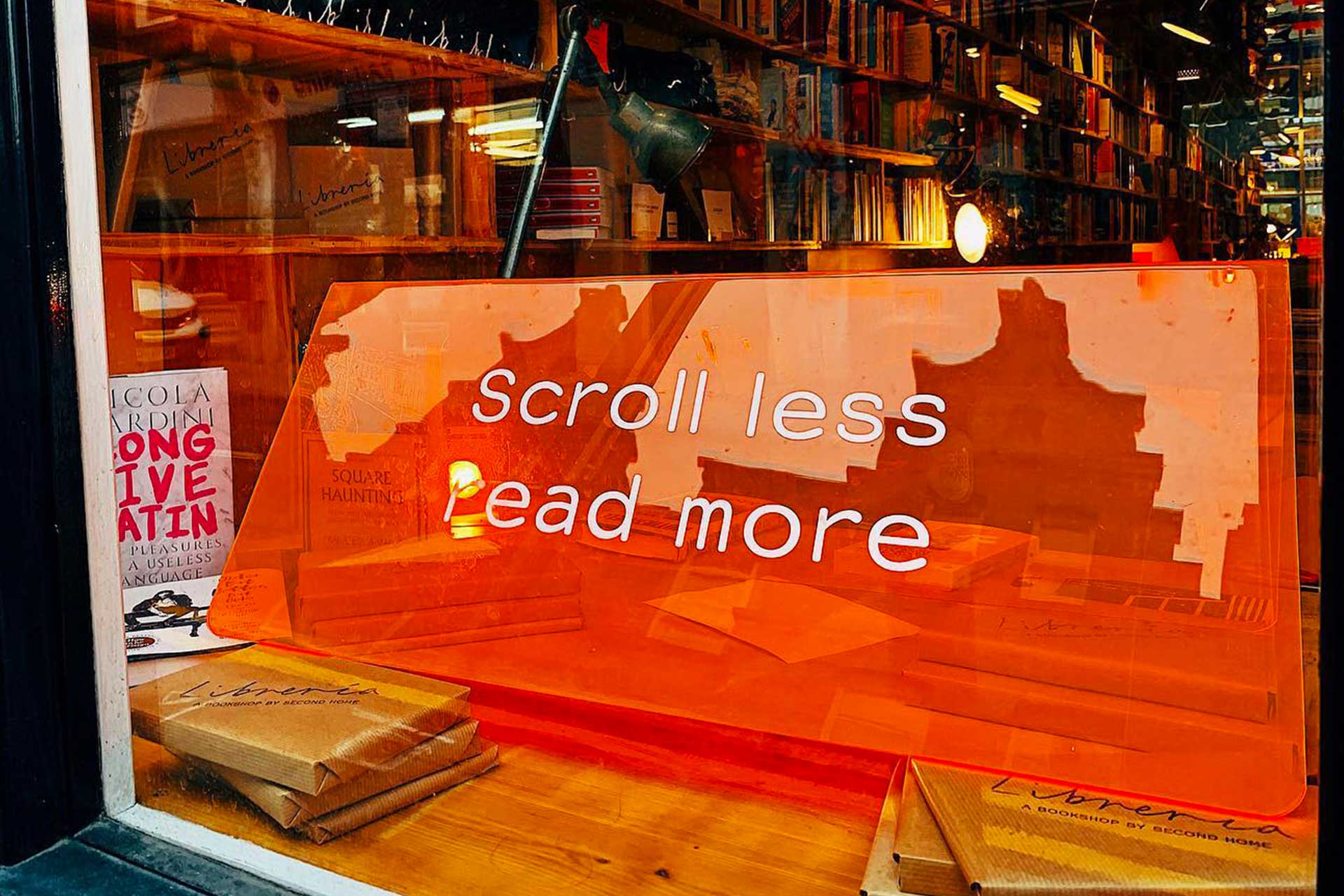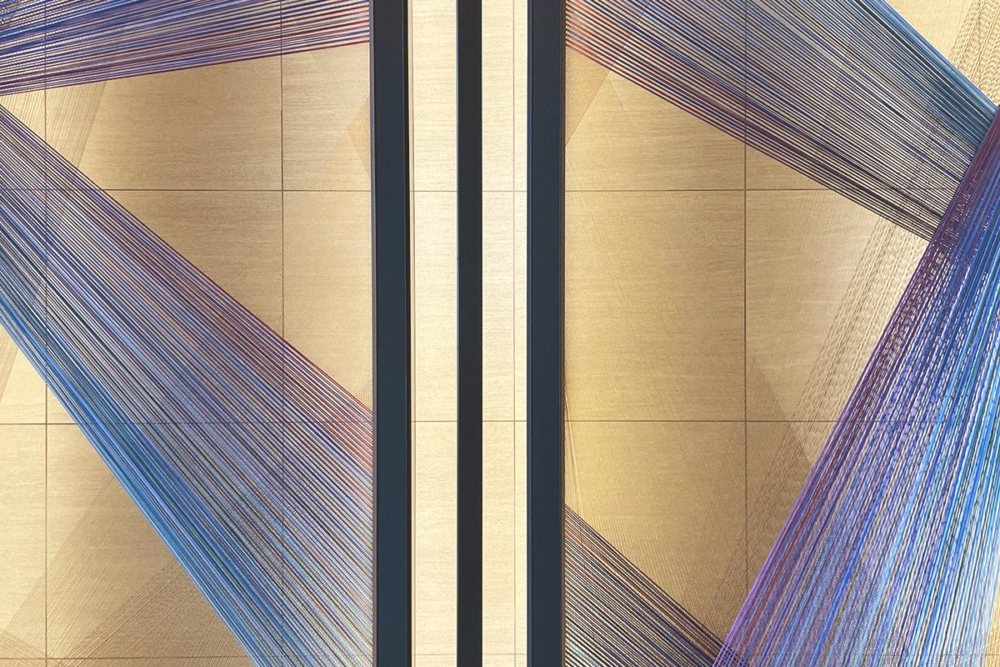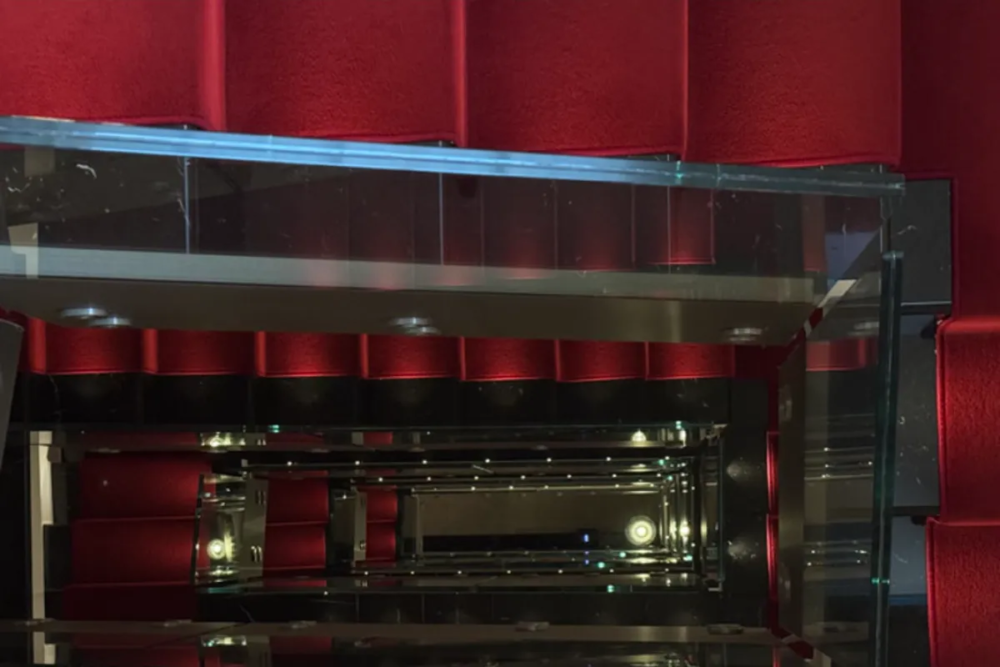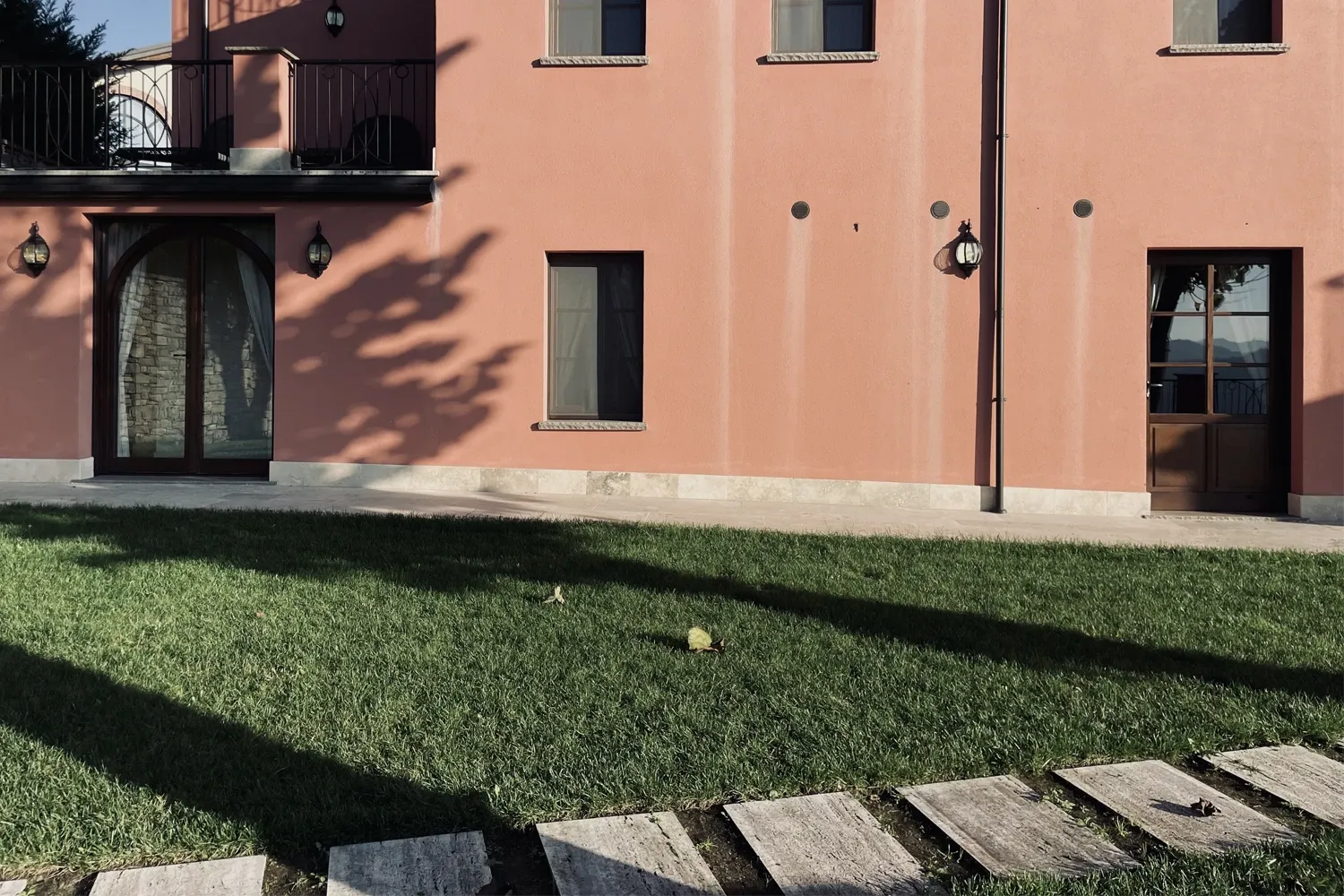
Monferrato: ‘Lorto’ Between Local Agriculture and Historic Architecture
In the hilly landscape of Alto Monferrato, recognized as a UNESCO World Heritage Site, Nordelaia combines the enhancement of truffles, hazelnuts, and local wines with the cuisine of LORTO, led by chef Charles Pearce, and architectural integration
Nordelaia, in Monferrato, Blending History, Design, and Regional Gastronomy
Nordelaia is a relais located in the municipality of Cremolino, in Alto Monferrato, an area in southern Piedmont recognized in 2014 as a UNESCO World Heritage Site for its unique historical interaction between human activities, the hilly landscape, and winemaking. This hospitality complex, housed in a rural structure dating back to the 13th century, serves as an example of integration between the restoration of traditional architectural heritage, contemporary design, high-level gastronomy, and the promotion of local resources.
History and Architecture of Nordelaia
The property where Nordelaia now stands originally housed a medieval farmhouse. Archival sources and cadastral records indicate the existence of rural settlements in the area as early as the 13th century, often linked to fertile land and the proximity to fortified centers. The complex underwent a restoration process using conservation principles and philological techniques, preserving as much as possible the stone walls, wooden beams, and historical finishes. These were complemented by contemporary design elements with low environmental impact, such as thermal insulation, LED lighting systems, and energy-efficient materials. The main goal was to balance the preservation of historical heritage with the needs of an international clientele, offering 12 suites with minimalist furnishings, neutral tones, and consistent references to the surrounding landscape.
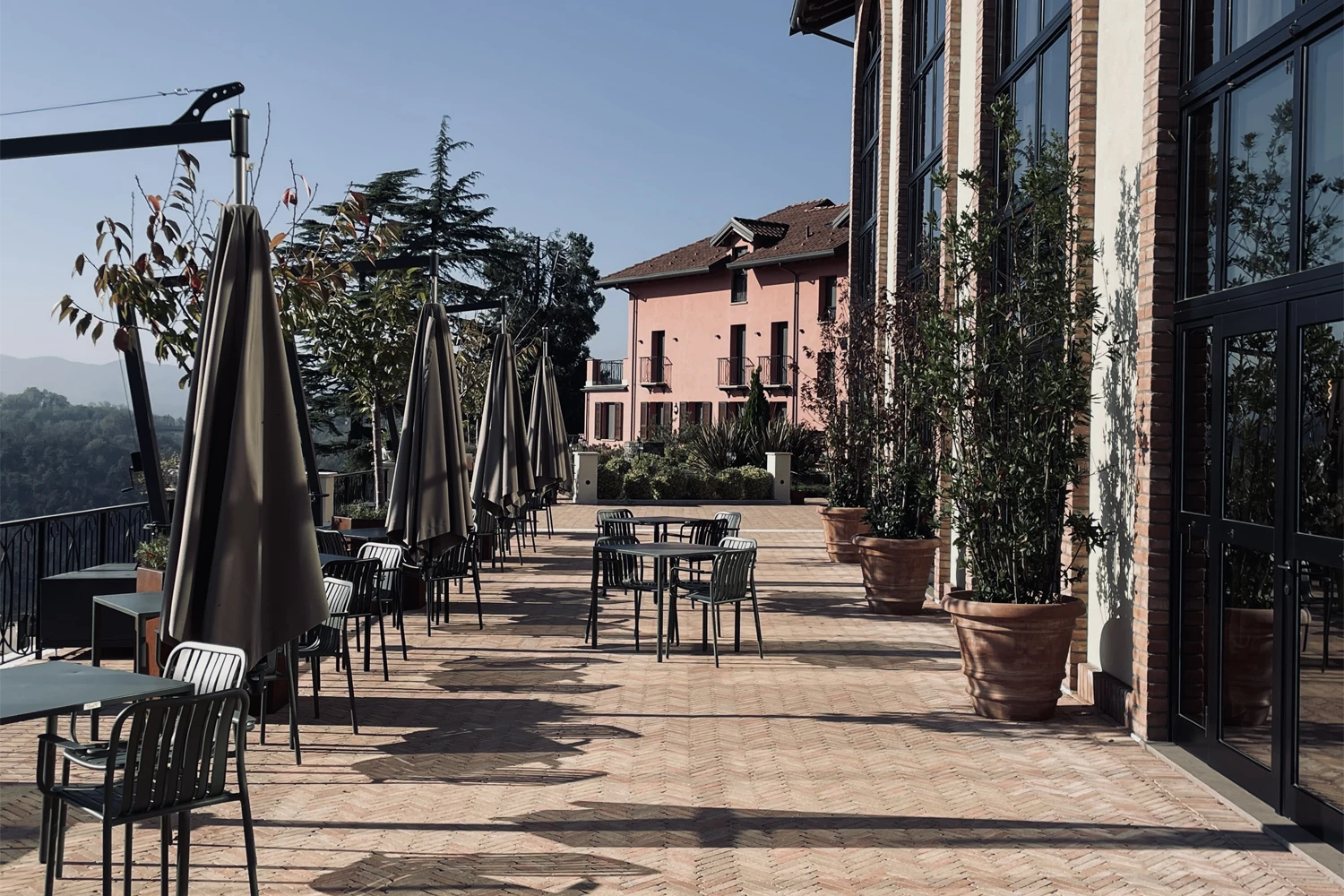
Geography and Characteristics of Monferrato
Nordelaia is located in a hilly region spanning the provinces of Alessandria and Asti. Monferrato is geographically delimited by the Tanaro River to the north and the Ligurian Apennines to the south. The average elevation of the hills ranges from 200 to 600 meters, with predominantly sedimentary formations composed of marls, sandstones, and marine clays from the Miocene epoch. These geological features have influenced the soil composition, typically clay-limestone or clay-silt, which is particularly suited to viticulture.
The origin of the name “Monferrato” remains uncertain. The most accredited hypotheses link it to expressions denoting soil fertility (“Mons ferax”) or the presence of iron deposits (“Mons ferratus”). The area has a temperate subcontinental climate, with moderately cold winters (average temperatures of 2–5°C in winter months) and warm summers mitigated by hill breezes (summer daytime temperatures around 26–30°C). Rainfall is distributed throughout the year with peaks in spring and autumn, while the hills’ exposure and ventilation help prevent moisture stagnation, a critical factor for grape quality.
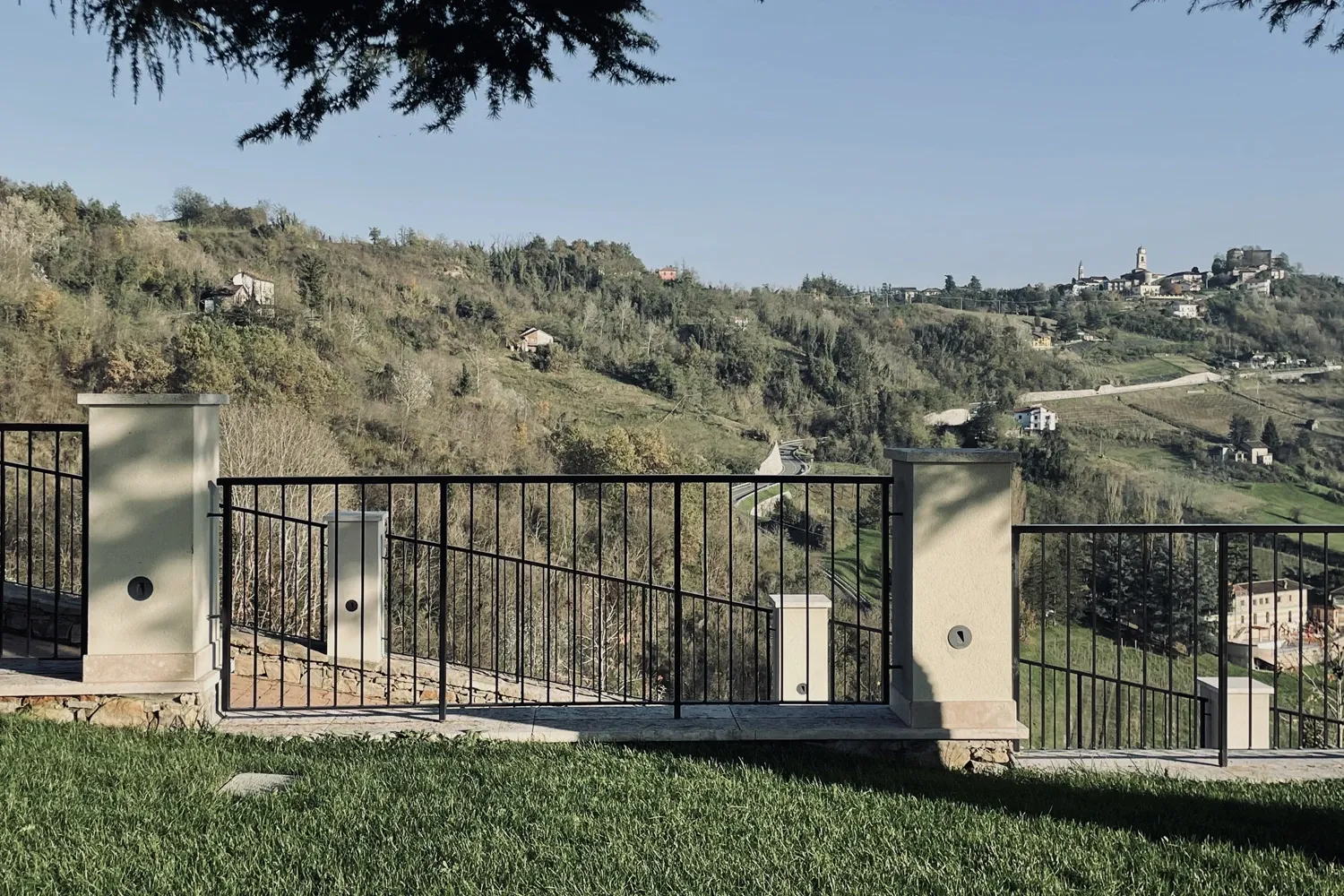
Cremolino: Historical and Territorial Context
Cremolino is a municipality in Alto Monferrato with a surface area of about 14 km² and an average altitude of 405 meters above sea level. The earliest documented references date back to the Middle Ages, when the village developed around a 13th-century castle. The Castle of Cremolino, situated on a dominant ridge, served as a control point for trade routes and agricultural activities in the surrounding area. Today, the historic center retains medieval architectural elements, with narrow streets and stone-paved paths. Economically, the area remains tied to viticulture (production of Dolcetto d’Ovada, Barbera del Monferrato, and other native varieties), niche agriculture, and rural tourism. Local farms are medium to small-scale, often family-run, with growing attention to sustainable and organic practices.
Design, Architecture, and Functionality at Nordelaia
Nordelaia was designed to maximize panoramic views of the hills and create continuity between indoor and outdoor spaces. Large glass windows, terraces, and the use of natural materials (oak wood, local stone, and natural fiber textiles) reduce the sense of separation between guests and the surrounding landscape. Common areas include a reception area, a lounge bar, and spaces dedicated to tasting local products. The dining facilities are spread over three floors, featuring the fine dining restaurant LORTO and a more casual Bistro. Lighting was carefully designed to minimize light pollution at night while ensuring safety and usability.
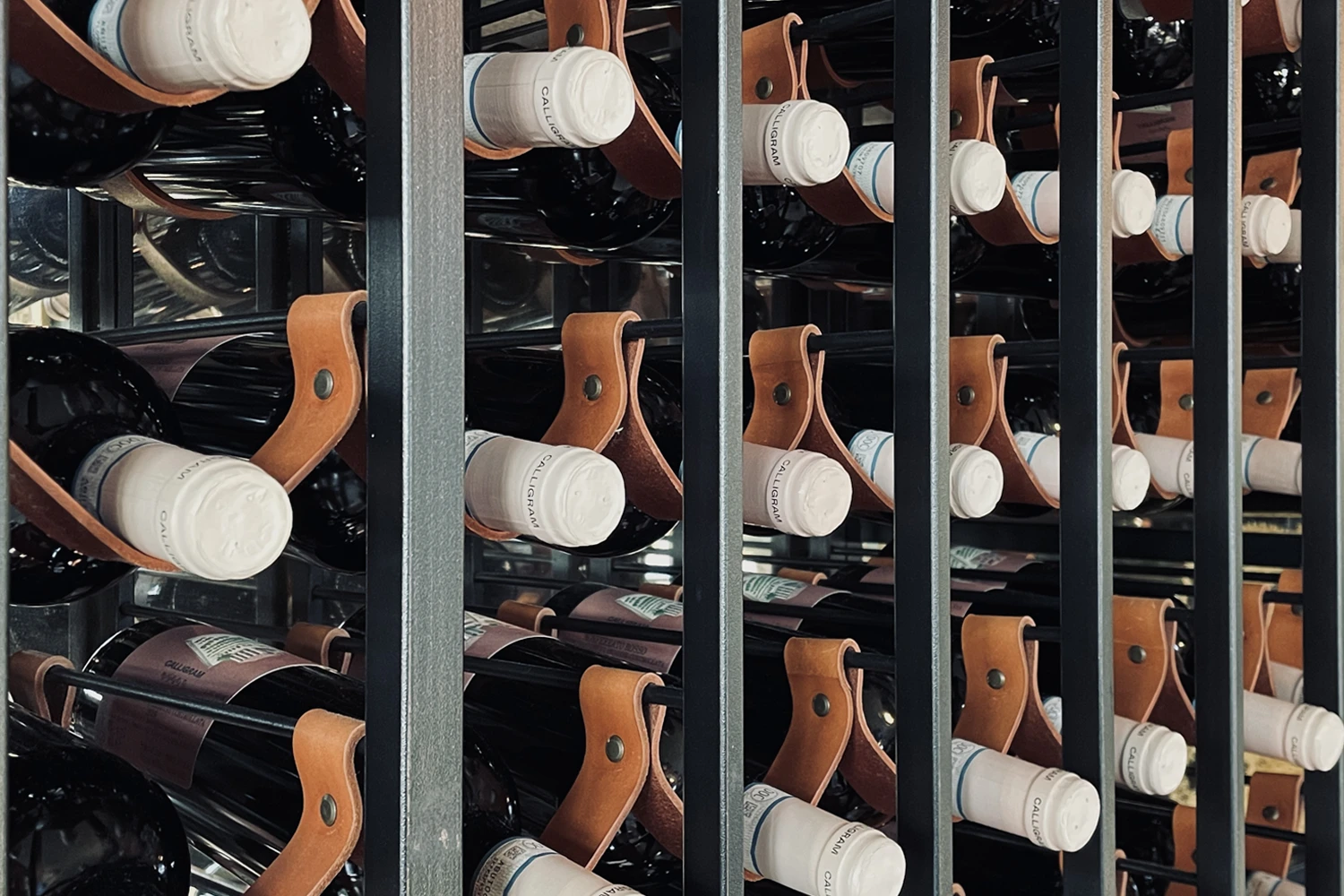
The Cuisine and Chef Charles Pearce
Nordelaia’s kitchen is led by English chef Charles Pearce, who trained at internationally renowned culinary institutes. Pearce gained experience in Michelin-starred restaurants in London and major European culinary hubs (Paris, Copenhagen, Barcelona), later engaging with Italian cuisine during his time in Tuscany and Piedmont. His role at Nordelaia allows him to focus on short supply chains, seasonality, and the use of local suppliers.
At LORTO, Pearce offers dishes that integrate techniques acquired internationally with local ingredients: eggs from nearby producers, PDO cheeses (such as Parmigiano Reggiano, used for fondues or creams), Piedmontese beef, and fresh egg pasta (like tajarin), made with up to 40 egg yolks for a particularly elastic texture and intense color. The Bistro offers a more informal menu with appetizers, main courses, and traditional dishes reinterpreted with modern techniques but less technical complexity.
Local Ingredients: Focus on White Truffles and Other Products
Piedmont is renowned for its availability of white truffles (Tuber magnatum Pico) during autumn. While Alba, in the nearby Langhe area, is the most famous hub for truffle marketing, Monferrato also has significant truffle-yielding zones. At Nordelaia, the autumn months allow guests to participate in truffle hunts with local trifolau (truffle hunters) and trained dogs. Truffles are then used in dishes such as tajarin with butter or poached eggs with fondue, preserving the aromatic profile of the fungus, characterized by notes of methane and volatile sulfur compounds.
In addition to truffles, the area offers a range of agricultural products: grapes for DOC and DOCG wines, Piedmont hazelnuts of the Tonda Gentile variety, porcini mushrooms, chestnuts from hill forests, seasonal vegetables, and meat from low-intensity local farms. Numerous wineries in the area offer tastings of wines such as Dolcetto d’Ovada, Barbera del Monferrato, Moscato, and other native or international varieties grown sustainably.
Wellness: The Spa and Additional Services
Nordelaia includes a spa with a heated pool, massage cabins, and personalized treatments. The spa adopts techniques inspired by classic thermal practices, including saunas, steam baths, and hydrotherapy. Treatments include relaxing massages, decontracting therapies, aromatherapy with locally sourced essential oils, and, upon request, preventive physiotherapy programs. The spa’s location in a hillside setting facilitates integrated wellness experiences, including green walks, light outdoor exercise, and herbal tea tastings made from local aromatic plants.
Tourist Activities and Monferrato Itineraries
Nordelaia’s location is ideal for hiking, cycling, wine tourism, and historical-cultural visits. The surroundings of Cremolino feature numerous marked trails suitable for low- and medium-difficulty trekking. Some routes pass through vineyards and mixed forests of oaks, acacias, and hazelnuts, offering opportunities to observe local fauna (roe deer, hares, pheasants) and endemic flora. Visitors can also access wineries for guided tastings, taking part in educational tours on vinification, wood aging, and soil management techniques.
Within a few kilometers, one can visit historic villages such as Ovada (known for Dolcetto d’Ovada DOC), Trisobbio, and Tagliolo Monferrato, all featuring medieval urban structures, historic castles, and Romanesque churches. Acqui Terme, about 15 km away, offers sulfur-rich thermal springs of ancient Roman origin, markets, and restaurants specializing in traditional Piedmontese cuisine.
Economic Aspects and Environmental Sustainability
Nordelaia operates within a growing tourism economy, still far from the mass flows typical of other well-known Italian regions. This allows for an approach focused on sustainability, the promotion of local producers, and the extension of the tourist season. The presence of vineyards, farms, and small-scale livestock operations provides a base of high-quality, zero-kilometer raw materials. Agreements with local suppliers aim to reduce transportation and environmental impact, while landscape preservation and biodiversity conservation align with UNESCO recommendations.
By renovating a historic building rather than constructing anew, Nordelaia has minimized soil consumption and preserved the site’s architectural identity. From an energy perspective, high-efficiency heating and cooling systems, low-emissivity double-glazed windows, LED lighting, and an integrated energy management system contribute to reducing consumption and the overall carbon footprint.
